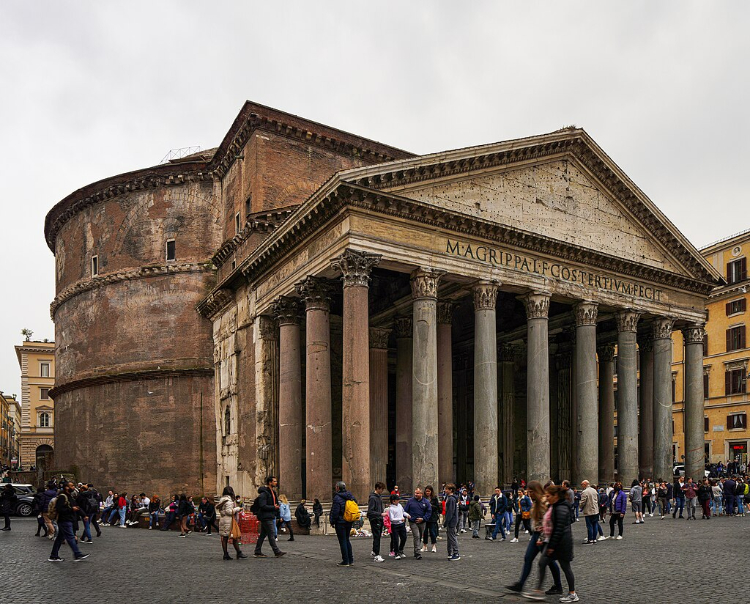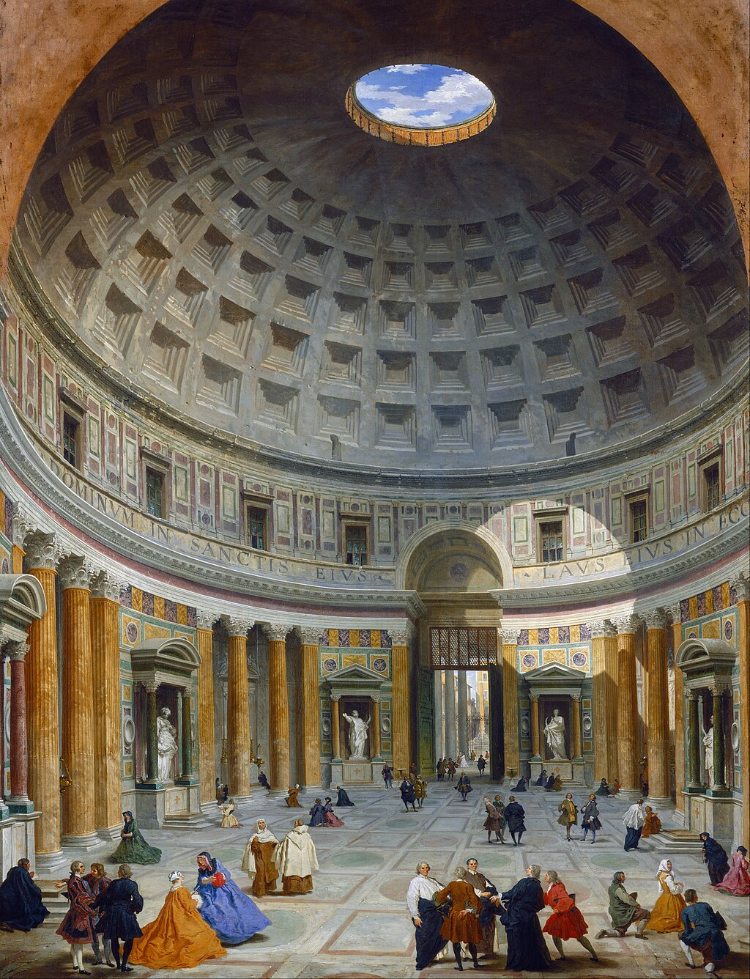The Pantheon, Rome

The Pantheon
It was built by Agrippa! No, Trajan! No Hadrian!
It was a temple to all gods (Pantheon means "all gods" in Latin)! No, it was a monument to Roman emperors! No, it was a church! No, it still is a church!
It's a temple built in ancient Greece! No, wait, that's the Parthenon!
A lot of mystery surrounds who gets credit for constructing the Pantheon and its original use. It's aso often confused with the Parthenon (simply due to their similar names) in Greece, even though it's definitely planted squarely in Rome.
What is evident, though, is that the Pantheon is an architectural and engineering marvel, and is one of the most copied styles in Europe and the Americas over the past 2000 years.
Concrete evidence

Giovanni Paolo Panini Public domain
The interior of the Pantheon is half of a giant sphere measuring 144 ft (44 m) in diameter. It is still the largest unsupported concrete dome in the world today. Roman engineers accomplished this by starting with a concrete mixture of denser filler materials near the base of the dome and gradually adjusting the mixture - and the dome's thickness - at the top. Coffers - the recessed panels in the dome - further lighten the load.
A large oculus (or eye) at the top of the dome allows light and, yes, rain to enter the interior. A drain handles nature's effluvia when it befouls the gods' chamber.
For comparison,he boulder in Raiders of the Lost Ark that nearly crushed Indy was a mere 22 ft (6.7 m) in diameter. See? Stay for a history lesson and get a movie recommendation.
I've seen this somewhere
The Pantheon's basic structure has been copied in buildings throughout the world. Its entrance is a portico - a porch area braced by columns (in this case, pretty Corinthian ones) and topped by a triangular pediment. The columns were mined in Egypt and shipped to Rome to demonstrate the reach of the empire in the 2nd century CE.
A pediment is architecture speak for large flat area where fancy art is displayed. In the Pantheon's case, the pediment is bare because its artistry was made of bronze, and bronze was valuable over the years for fashioning weapons which, among us humans, is more important than art.
Behind the portico is the rotunda, which is simply a round room topped with a dome.
Examples of Pantheon-inspired buildings around the world are the US Capitol building, St. Peter's Basilica, and the mini-Pantheons that I'm sure are sold at the Pantheon gift shop.
